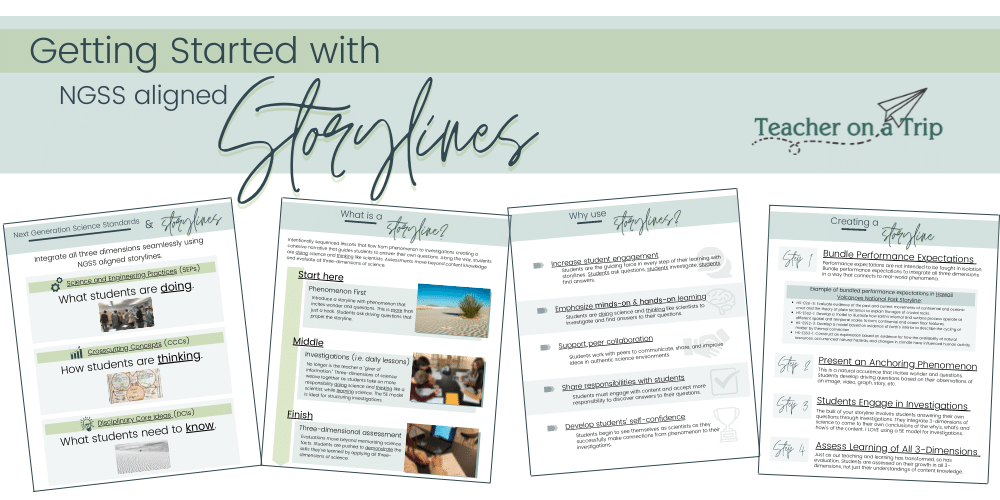Teacher Mindset Shift a Must for NGSS

Why do good teachers struggle when using NGSS storylines? They haven’t committed to the teacher mindset shift necessary to transition to NGSS.
Teachers can use a checklist to incorporate components of a quality NGSS storyline.
- Students experience phenomenon first and ask driving questions.
- Students apply Science and Engineering Practices throughout investigations.
- Students utilize Crosscutting Concepts to make connections to science content.
- Lessons incorporate student investigations.
Yet, something is missing.
- Students aren’t asking deep questions.
- Students aren’t taking initiative to plan investigations.
- Students are waiting for you to provide more information.
Sound familiar?
NGSS is not just a set of standards. This is a transition to how we teach and how our students learn.
In order to make that transition, we -the teachers- must make a mindset shift.
New to storylines? You can download this free guide Getting Started with Storylines to get all the details about the best NGSS aligned teaching strategies.

NGSS Teacher Mindest Shift:
There are three aspects of the NGSS teacher mindset shift.
- Release control
- Trust your students
- Let go of content
Release control
This does not mean giving up structure in your classroom. You can still have expectations and order. But you have to give students the freedom to make mistakes, develop models that may not work, ask questions and investigate to find answers, and puzzle through problems.
It may get a bit more chaotic. It may get a bit louder. It may get a bit messy.
If students are on task and engaged, let’s celebrate it! And teach them to clean up after themselves.
Trust your students
I often hear teachers ask, “What if my students don’t ask the right questions?” We have to trust that our students will ask the right questions if we present a good phenomenon. When high expectations are set for students, it is amazing what they can do.
Yes, students will need support. But, we have to trust that they will step-up and can puzzle through problems that are presented. Students will learn and adapt quickly if teachers stop giving them answers and put more responsibility on the students.
Let go of content
There is no surprise that student-driven investigations and learning will take more classroom than the traditional “teaching as telling” approach. So, it is time to take a look at all the content we’ve crammed into each course and really evaluate what aligns with the standards.
NGSS was developed in a way to include less breadth, but go more in depth over content. Additionally, students build on their content knowledge from K-12. It is more important than ever to look at what students should learn before and after they are in your classroom. Really take a look at the NSTA DCI Matrix to gain an overall picture of what content students should learn at each grade-level band. You may find that some content you used to include is actually incorporated into a different grade-level band or is not a domain focus within NGSS.
And there you have it. The magic sauce you need to utilize these well-planned NGSS lesson is fully embracing and committing to all aspects of the teacher mindset shift.
Dive deeper into the teacher mindset shift, student mindset shift, and creating NGSS aligned storylines that work for your unique group of students.

Pin it! Save it for later!

